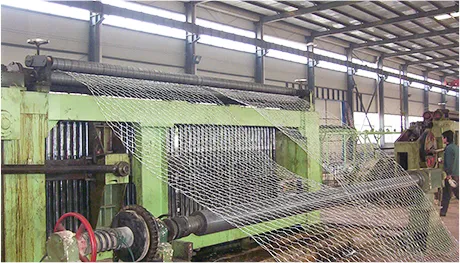-
 Phone:
Phone: -
 Email:
Email:

rockfall netting
Rockfall Netting A Vital Solution for Slope Stabilization
Rockfall netting is an essential engineering solution designed to manage and mitigate the hazards posed by unstable rock formations. As urban development spreads into hilly and mountainous terrains, the risk of rockfalls has become an increasing concern for both infrastructure safety and environmental sustainability. This innovative system plays a critical role in protecting roads, buildings, and natural habitats from potential rockfall incidents, ensuring the safety of both people and property.
Understanding Rockfall Dynamics
Rockfalls occur when loose rocks, boulders, or other debris detach from steep slopes or cliffs and cascade down to lower elevations. Factors such as weathering, freeze-thaw cycles, seismic activity, and human-induced changes to landscapes can trigger these events. When rocks fall, they can travel at significant speeds, posing threats to anyone in the vicinity and causing substantial damage to infrastructure.
Estimates suggest that rockfalls account for numerous fatalities and injuries each year, along with extensive economic losses due to property damage and interruptions in transportation routes. This makes it imperative for engineers and planners to adopt effective measures to prevent rockfalls.
The Role of Rockfall Netting
Rockfall netting is a type of passive protection system designed to contain and minimize the impact of falling rocks. Comprising strong steel cables and mesh, the netting is installed on vulnerable slopes or cliff faces to catch and hold rocks before they can reach populated areas or infrastructure. This system not only absorbs and dissipates the energy of falling rocks but also minimizes the debris that can accumulate on roads and railways below.
rockfall netting

One of the primary advantages of rockfall netting is its versatility. It can be adapted to a wide range of environments and slopes, making it applicable for various terrains, including highways, railways, and mountainous regions. The installation process is relatively quick and non-intrusive, allowing for efficient implementation without significant disruption to the surrounding landscape.
Design Considerations and Implementation
The design of rockfall netting involves careful consideration of several factors, including the size and weight of potential falling rocks, slope steepness, geological conditions, and environmental impact
. Engineers conduct thorough site assessments to determine the most effective configuration and materials needed for each project.Moreover, maintenance is crucial for the long-term effectiveness of rockfall netting. Regular inspections help identify any wear or damage to the netting, ensuring that it remains functional and reliable. As environmental conditions change, adaptations may be required to enhance resilience against increased rockfall activity.
Environmental and Aesthetic Benefits
Besides providing safety, rockfall netting also contributes positively to the environment. By preventing rockfalls, it protects local ecosystems and habitats from destruction. Furthermore, modern netting systems are designed to blend into the landscape, minimizing visual impacts and preserving the natural aesthetics of the area.
In conclusion, rockfall netting represents a crucial advancement in slope stabilization technology, addressing safety concerns for both human populations and infrastructure while promoting environmental conservation. As urbanization continues to encroach on rugged terrains, implementing protective measures like rockfall netting becomes increasingly vital. Through careful design and ongoing maintenance, these systems can effectively safeguard against rockfall hazards, ensuring a safer future for communities and the landscapes they inhabit.
-
Wire Mesh for Every Need: A Practical SolutionNewsJul.25,2025
-
Steel Fences: Durable, Secure, and Stylish OptionsNewsJul.25,2025
-
Roll Top Fencing: A Smart Solution for Safety and SecurityNewsJul.25,2025
-
Cattle Farm Fencing Solutions for Maximum SecurityNewsJul.25,2025
-
Affordable Iron Binding Wire SolutionsNewsJul.25,2025
-
Affordable Galvanized Wire SolutionsNewsJul.25,2025
-
Wire Hanger Recycling IdeasNewsJul.25,2025








